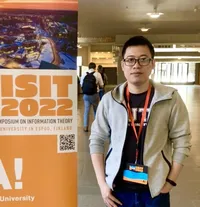On q-ary deletion/insertion Error Correcting Codes
Abstract
Codes correcting deletion and insertion errors are important in many data storage systems (such as bit-patterned media magnetic recording systems, and racetrack memory devices) and communication systems (for example, in file synchronization, and mobile data). The problem of correcting such errors has recently received significantly increased attention due to the DNA-based data storage technology, which suffers from deletions and insertions with extremely high probability. Designing codes for correcting deletions and/or insertions is well-known to be a challenging problem.
Although binary codes correcting a single deletion/insertion error were presented about 50 years ago, through the work of Varshamov and Tenengolts (1965), or Levenshtein (also in 1965), a breakthrough in designing good binary codes correcting multiple deletion/insertion errors was made only in recent years. Surprisingly, there are still many interesting open problems, even in the most fundamental settings with only a single error. In this talk, we briefly introduce literature results on codes correcting deletions/insertions, and other variations (such as substitutions, transpositions, absorptions, tandem duplications, inversions) and their applications.
Biography
Tuan Thanh Nguyen received a B.Sc. degree and a Ph.D. degree in mathematics from the Nanyang Technological University (NTU), Singapore, in 2014 and 2018, respectively. He is currently a Research Fellow at the Singapore University of Technology and Design (SUTD), with the Advanced Coding and Signal Processing (ACSP) Lab of SUTD. Before joining SUTD, he was a Research Fellow at the School of Physical and Mathematical Sciences (SPMS), NTU. He is currently a Member of IEEE and IEEE Information Theory Society. His research interest lies in the interplay between applied mathematics and computer science/engineering, particularly including combinatorics, coding theory, and algorithms. His current research projects concentrate on coding techniques for communication and data storage systems, including error-control codes for DNA-based data storage and constrained codes for simultaneous energy and information transfer.
